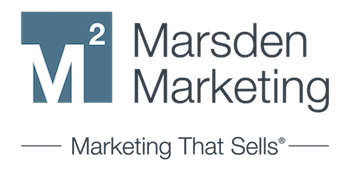When building your website, search engine optimization, or SEO, is likely one of your top priorities – as it should be! A good SEO strategy is more than just a handful of keywords, though; it’s an entire ecosystem of tools, tricks, and techniques that all work in tandem to make your website more discoverable to your audience.
There are three categories of SEO: on-page, off-page, and technical. For this blog post, we’re going to focus on on-page SEO best practices.
What is On-Page SEO?
On-page SEO is the optimization of individual pages on your website. There are four main contributing factors:
- Content
- Images
- User Experience (UX)
- URLs
Each of these components is vital to a solid on-page SEO strategy, and each of them is important to building a foundation that gives your website the visibility you need.
On-Page SEO Best Practices: Content
When it comes to the content pillar of your on-page SEO strategy, there are a few things to keep in mind:
- Keyword density & usage
- Headings (H1, H2, H3…)
- Title tags and meta descriptions
Keyword Density & Usage
As you’ve written content and built your website, you’ve likely also put together a keyword strategy. If you haven’t yet, this is a good time to start, as this strategy should serve as a framework for writing content for your site – you want to make sure that your keywords are spread evenly throughout your pages but beware of keyword stuffing.
Keep it simple, be specific, and don’t be afraid of using synonyms!
Headings
Using headings helps create a better user experience by breaking up a page and making it “skimmable.” Rather than reading closely for the exact information they need, your audience can skim the article for relevant headings to quickly find what they are looking for.
Using a hierarchy of headings helps users and search engines understand which parts of a page are most important. Take this blog, for example – I’ve used a variety of headers, beginning with H1 (the biggest and most important), down to H3 (the smallest and most specific). This helps break up the content and helps the reader find exactly what they’re looking for.
Headers should be descriptive and use your keywords and related phrases.
Title Tags & Meta Descriptions
These are additional content elements that give signals about the content of your website. The title tag appears at the top of the window and in your page’s listing on the search results page, while the meta description appears only on the search engine results page (SERP). Both of these features are beneficial for users and web crawlers, as they give a high-level overview of the page’s topic and contents.
Don’t neglect these two very important elements. Without them, search engines like Google will do their best to pull a snippet of text to use as your meta description. This is all right in some cases, but it may not be the most accurate description – or appealing to users. Keep in mind that the title tag and meta description are vital for giving users an idea of what they’ll find on a page and also for drawing them in. They should tell them whether or not the information you’re providing is relevant and useful to them, two of the main tenets of inbound marketing.
Image Optimization

On a website, images are much more than design elements. They provide yet another keyword opportunity in the alt text.
Alt text, also called an alt attribute or alt description, is an HTML element that indicates what text should be displayed if an image cannot be rendered. Alt text is also an element of accessible web design, as it “fills in” information for visually impaired users or those who use eReaders. Above all else, alt text should be descriptive, but good alt text will also utilize keywords and relevant phrases to give you an SEO boost.
Aside from alt text, you should ensure that all of your images are optimized. If images are too large, it can really slow down your site, resulting in a poor UX and potentially increasing your bounce rate. An easy way to combat this is by compressing your images – this can be done with most editing software, or via online compressors like TinyPNG.
User Experience
User experience, or UX, ties directly into SEO because they have a common purpose: helping users find what they are looking for.
UX includes things like site speed, mobile-friendly design, and clear, descriptive language. Are your images properly optimized? If not, that could slow your site down. If your website is not optimized for mobile, many users won’t bother. More than half of all searches are conducted on a mobile device, meaning mobile or responsive design is vital.
URL Structure
URLs are perhaps the most-neglected facet of SEO. People either underestimate the value they have, or they just don’t think to optimize their URLs. But your web URL holds many opportunities for optimization, and it goes beyond keyword usage.
When you create a URL for your page, make sure you use clear, descriptive language. The URL should mirror the title of the page, but this is a good opportunity to use your target keywords – don’t let it go to waste.
Most search engines (including Google) do not treat underscores as word separators, so be sure to use hyphens in multiword URLs.
An additional consideration is whether to make your URLs static – unchanging – or dynamic -- changing based on various criteria. In general, static URLs are more SEO-friendly. In fact, search engines usually cannot process dynamic URLs at all, and when they can, each URL would be catalogued as an individual page.
Additional On-Page SEO Considerations
As you can see, there are many contributing factors to on-page SEO, and we’ve barely scratched the surface here. For more in-depth coverage on SEO, check out our blog, or talk with us about developing your on-page SEO strategy.
Want to learn more on how to bring your website up to date?
Check out our blog post on how to analyze your B2B website.





